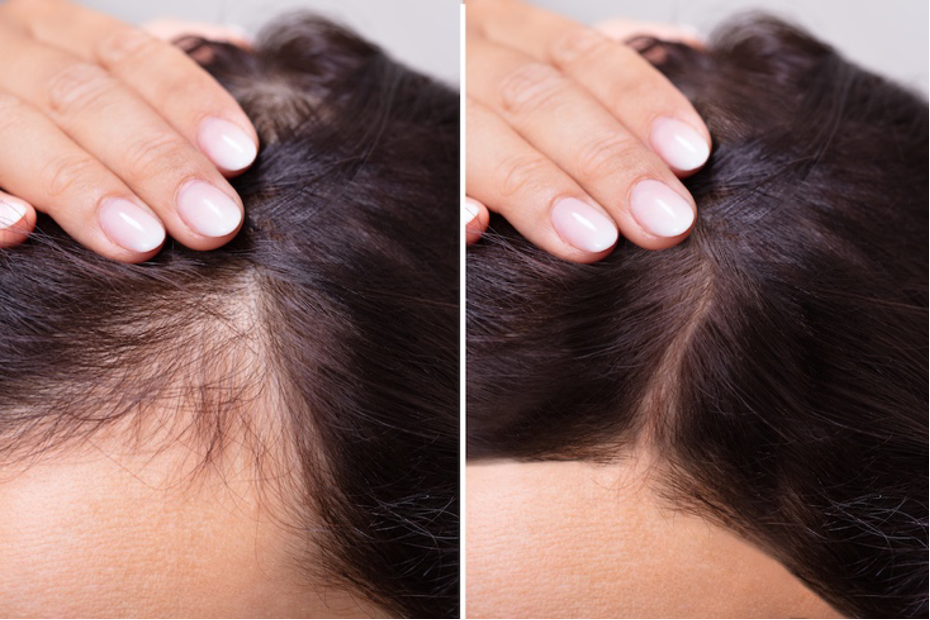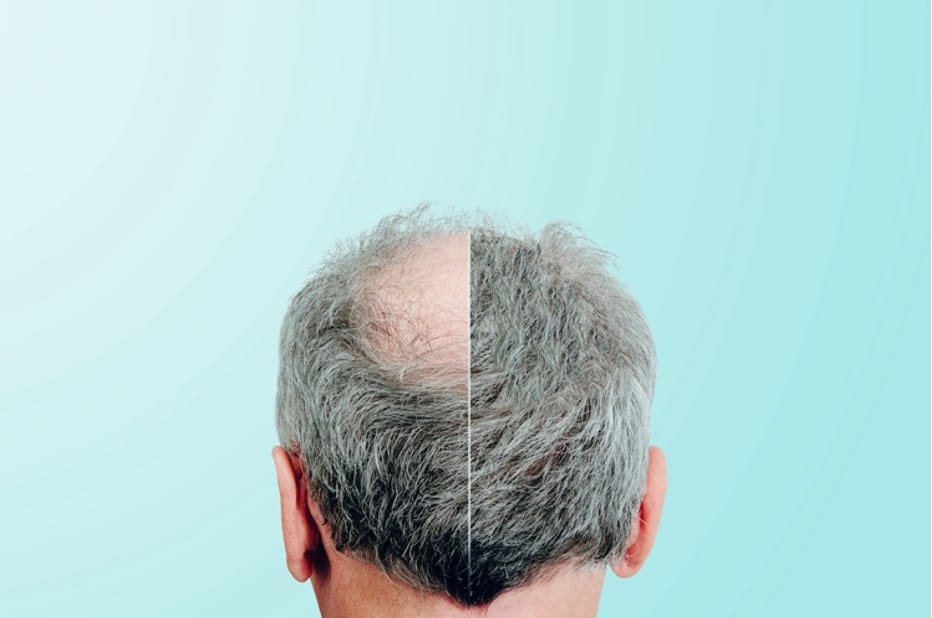Whether it’s a few extra strands in your brush or a noticeable thinning on your scalp, understanding the science of hair loss is critical to addressing the issue effectively. Hair loss can affect anyone, but the underlying causes vary greatly, from genetics to lifestyle factors.
In this article, we’ll look in-depth at the hair growth cycle, explore common triggers for hair loss, and explain how to differentiate between temporary and permanent conditions. We’ll also discuss when it’s time to seek professional help.
MORE NEWS: 12 Arizona companies make Healthiest 100 Workplaces in America list
The Hair Growth Cycle
Hair growth happens in distinct phases that repeat throughout your life. Understanding this process can clarify why hair loss happens:
- Anagen (growth phase): The anagen phase is the active growth stage of the hair cycle, lasting anywhere from two to eight years, depending on your genetics. During this phase, the hair follicle produces an entire hair shaft. The longer the anagen phase lasts, the longer your hair can grow. However, as we age, the anagen phase shortens, which can impact hair growth.
- Catagen (transition phase): This brief phase lasts only two weeks and acts as a bridge between growth and rest. In the catagen phase, the hair follicle shrinks and detaches from the blood supply. This step prepares the hair for shedding and eventual regrowth.
- Telogen (resting phase): The telogen phase lasts around two to three months. During this time, old hair remains in place until it sheds naturally, making way for new growth. Roughly 100 to 150 hairs in the telogen phase are shed daily. However, if hairs in the anagen phase enter the telogen phase too early, excessive shedding can occur.1
In a healthy cycle, some hairs are actively growing while others are resting or shedding, keeping overall hair density stable. Disruptions to this cycle — due to stress, medical conditions, or external factors — can cause an imbalance, leading to more hair entering the shedding phase prematurely.1
Common Causes of Hair Loss

Hair loss can stem from various causes, ranging from genetic predispositions to medical conditions. Here are the most common culprits:
- Androgenetic alopecia (male and female pattern baldness): Male and female pattern baldness are hereditary conditions that follow a predictable pattern of hair thinning. In men, hair loss often starts at the temples and crown, while women may experience diffuse thinning across the scalp. This condition is the leading cause of hair loss worldwide.2 For individuals with androgenetic alopecia, hair loss treatments such as minoxidil are often recommended. Minoxidil works by increasing blood flow to the hair follicles and extending the anagen phase, which helps slow hair loss and stimulate regrowth in thinning areas.3
- Hormonal changes: Fluctuations in hormones can significantly impact hair health. For women, pregnancy, childbirth, menopause, and even hormonal birth control can lead to noticeable shedding. Conditions like polycystic ovary syndrome (PCOS) and thyroid imbalances can also contribute to hair loss.2
- Physical and emotional stress: Stress-related hair loss, or telogen effluvium, occurs when a sudden shock to the system — such as illness, surgery, or a major life event — pushes more hair than usual into the resting phase. This type of hair loss often resolves on its own once the stressor is removed.2
Environmental and Lifestyle Factors
While genetics and medical conditions often dominate the conversation, lifestyle factors also play a significant role:
- Stress: Chronic stress can push hair follicles into the resting phase prematurely, causing excessive shedding — a condition known as telogen effluvium.
- Diet: Nutritional deficiencies, especially in iron, protein, and vitamins like biotin, can weaken hair. Crash dieting or restrictive eating habits often exacerbate the problem.
- Hairstyling practices: Frequent use of heat tools, harsh chemical treatments, and tight hairstyles can damage hair shafts and follicles over time.2
Understanding Temporary vs Permanent Hair Loss
Not all hair loss is permanent. Knowing the difference can help determine the best course of action.
- Temporary hair loss: Temporary conditions like telogen effluvium, postpartum hair shedding, or hair loss from stress and diet deficiencies often resolve once the underlying issue is addressed. Hair typically regrows within three to five months.
- Permanent hair loss: Hereditary conditions like androgenetic alopecia and scarring alopecia involve irreversible damage to hair follicles. Treatments can slow the progression but may not fully restore lost hair.4
Proper diagnosis is key to distinguishing between these types and choosing the right treatment.
When to Seek Help

Hair loss can often be managed with simple lifestyle adjustments, but certain signs warrant professional intervention.
- Rapid or patchy hair loss: If hair falls out in clumps or bald patches appear suddenly, consult a dermatologist to rule out conditions like alopecia areata or infections.
- Accompanying symptoms: Scalp pain, itching, or redness alongside hair loss may indicate an underlying issue like psoriasis, fungal infections, or even lice infestations — situations that may call for expert lice removal Tampa services
- Visible thinning or receding hairline: Early intervention with medications like minoxidil or finasteride can slow or reverse hair loss in cases of androgenetic alopecia.
- Family history of hair loss: If pattern baldness runs in your family, seeking advice early can help you explore preventive strategies.2
Conclusion
Hair loss is a multifaceted issue influenced by genetics, health, and lifestyle. While it can feel overwhelming, understanding the science behind hair growth and identifying potential causes are the first steps toward finding effective solutions.
Don’t hesitate to seek professional guidance if your hair loss feels unmanageable or impacts your confidence — help is just a consultation away. By prioritizing self-care, maintaining a balanced diet, and seeking professional help when needed, you can take control of your hair health and boost your confidence.
Bibliography
- Natarelli, N., Gahoonia, N., & Sivamani, R. K. (2023). Integrative and mechanistic approach to the hair growth cycle and hair loss. Journal of Clinical Medicine, 12(3), 893. https://doi.org/10.3390/jcm12030893
- Harvard Health. (2024, May 7). Hair loss. https://www.health.harvard.edu/a_to_z/hair-loss-a-to-z
- Regaine. (n.d.). How minoxidil works. https://www.regaine.co.uk/minoxidil/how-minoxidil-works
- Phillips, T. G., Slomiany, W. P., & Allison, R. (2017, September 15). Hair loss: Common causes and treatment. American Family Physician. https://www.aafp.org/pubs/afp/issues/2017/0915/p371.html




